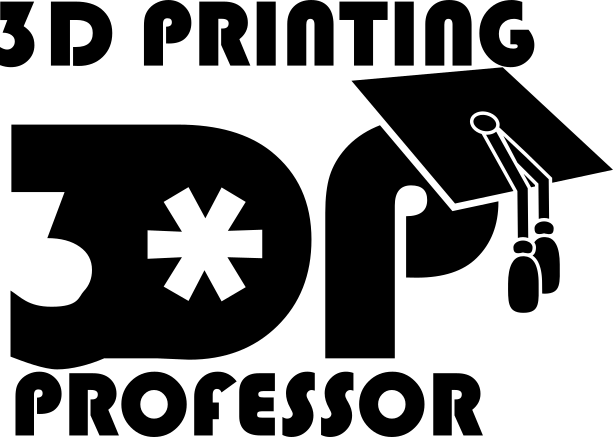If you want to learn more about designing for home 3D printers, my book, 3D Printing Blueprints, contains everything a beginner needs to know, and more than enough to teach a more experienced 3D designer as well. This post is just a little slice of that knowledge, but if you want more, I encourage you to get the book.
There are different ways to 3D print, and each provide their own advantages and disadvantages. FF/FDM printing, the sort that home 3D printers use that involves melting and drawing material layer-by-layer on top of each other, has the advantage of being cheap, relatively clean, and not wasting a lot of space and material. However it has a disadvantage in that thin air makes a lousy build platform. If a layer of the print has a part that doesn’t have anything beneath it, you’re going to have a bad time. It will try to put something in the space, but without anything to stick to the material will simply drool out of the print head, dangling until it finds something to attach to. The final result will be unpredictable, but almost surely bad.
I’ve created a nice, complex example. I’ve reposed the 2″ wizard mini I made before to make it less printable (though a little more cool looking). Looking at the render above (click to biggerer), can you predict all the areas that will be a problem? Look for the parts that have nothing underneath them. Then look at the resultant print below.
It’s sometimes surprising how quickly the print corrects itself. But it’s pretty clear that the print is far from perfect. Fortunately there’s a setting that will correct this problem. Most 3d print preparation software will build “supports”, a thin, easy to remove lattice of material that will build up to the unsupported part and that you can clean off easily after the print is done. Theoretically. Let’s set how supports helps our wizard friend.
Unfortunately the even the magic of supports couldn’t fix this print. The staff was supported on a tiny thin support tower that didn’t take, so the staff was ruined below the wizard’s hand. I have no idea why it was ruined above his hand. But supports did manage to make the rest of the wizard mostly printable. However it still has a lot of cleanup before it’ll be a presentable print.
Supports vary in different 3D print preparation software and it’s an area that clearly is still not perfect, especially for the more creative prints like the one I’ve presented her. And of course supports need to be removed. If the supports are hard to get to because they’re inside the piece where they can’t be easily reached or deep in a recess it’s possible surgical cleanup efforts will be necessary before you can use your 3D printed part. And FFF supports have other weaknesses. Rounded bottoms don’t come off quite round enough. Fine details may break off with the supports. And leavings of the supports may still be there, even after cleanup.
This is why I advocate FFF friendly designs. Most of the things I design will print entirely without supports. The pose I choose when modeling the wizard might not have been as interesting, but it does print without supports. Designing this way requires a little extra effort but insures that objects will come off the build platform ready to use without any cleanup. To design for support-less printing requires knowing a few little rules. Those rules be easily remembered with the letters “YHT“.
Y. The letter Y standing on a build platform slopes out gently. Even though the layers are getting bigger they’ve got enough of the previous layer to stick to that they won’t droop or fall. This sort of gentle overhang is perfectly safe and will result in successful prints. Generally speaking 45 degrees or less is perfectly safe. More than 45 degrees can work in certain circumstances, I’ve had overhangs of up to 70 degrees work successfully, but don’t make it a habit without some experience.
H. The letter H standing on a build platform has 2 towers that “bridge” in the middle, and this bridging is actually relatively safe as well. It’s not 100% sure, but if a layer has a place to start and a place to end then it will bridge an open air gap successfully. It’s not as safe as the “Y” example was, but it’s still pretty safe.
T. The letter T, on the other hand, is right out as is, doubly so if it’s serif. Danging out into open air with nothing to latch on to will result is sloppy, messy, failed prints. However, the T can print if you flip it upside down or lay it on it’s back. So sometimes the trick to good design is to turn your design on it’s head and be prepared to look at things from a different perspective.
Again, my book, 3D Printing Blueprints, is all about this. Not a single print that requires supports in the entire book. So if you’d like to know more about designing for 3D printing like this, check it out.






